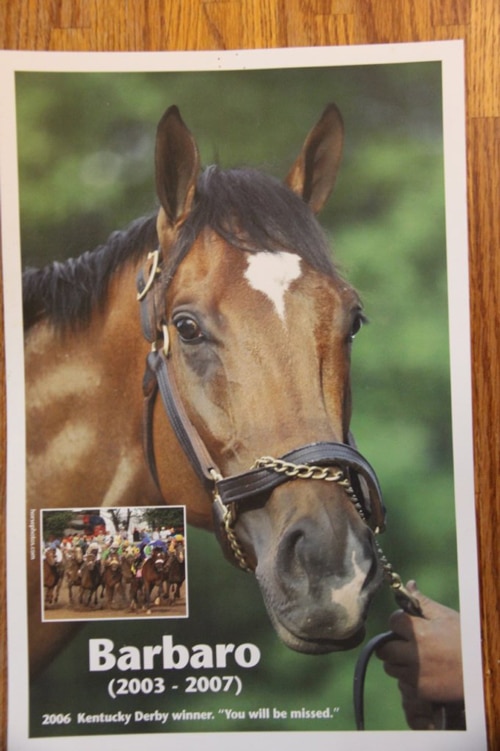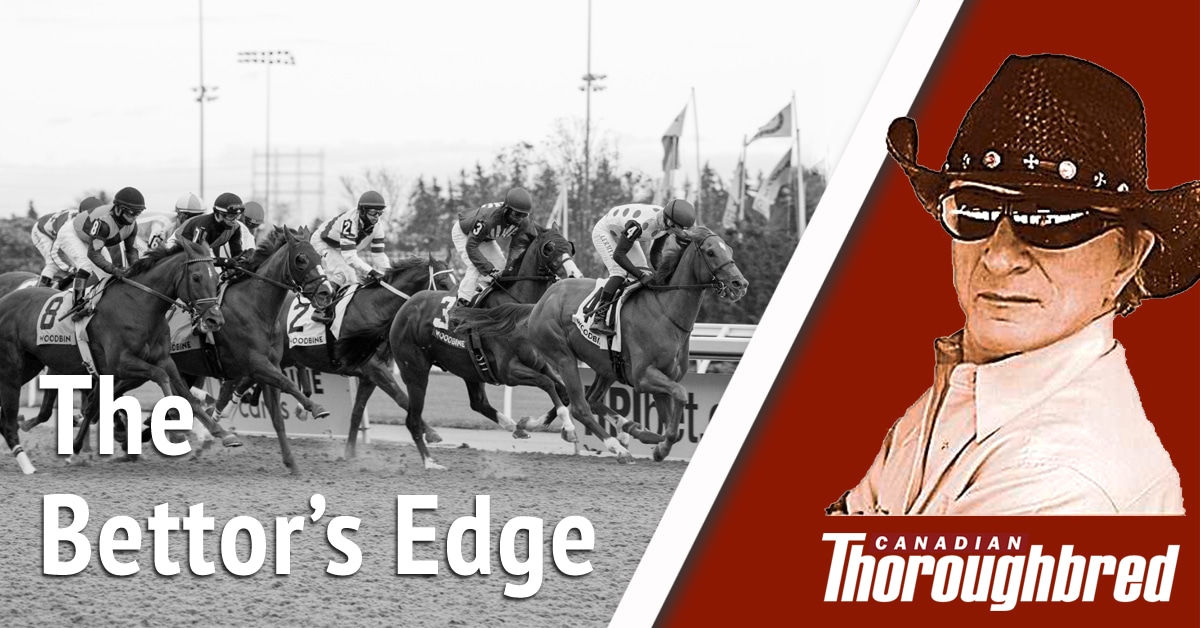We handicappers put faith in logic – and logic works most of the time. But we also have learned to expect the unexpected. Time after time we miss one or two legs of a pick-4 or pick-5 or pick-6. Identifying when this might happen could help salvage a win and I’ll talk about a couple such incidents from Saturday’s Woodbine program.
But first I have to tell you about an experience that shook me to the core and left me believing there are forces in the universe we simply can never understand. It involved the 2006 Preakness Stakes in which the highly-favoured Kentucky Derby winner, Barbaro, broke down.
I knew Barbaro was going to break down.
What? Sitting on my sofa at two a.m. on Preakness morning with my Daily Racing Form opened to the Preakness Stakes, a cold shivery feeling went up my spine. “Something terrible is going to happen to Barbaro,” I thought. Wow! Where did that come from?

A constant reminder that stuff happens.
I forgot about that sensation the next morning but in mid-afternoon, while playing races in the Race Book at Assiniboia Downs, that feeling flooded back more powerfully than the night before which I related to my betting friend — and, because the feeling was so overwhelming, kept pestering him about it, saying at one point: “Something’s going to happen where everybody here is going to go ‘eee’ except me.” I bet tickets without Barbaro on them.
Five steps out of the gate, Barbaro fractured bones in a hind leg — and after eight months of heroic efforts to save his life as his stall was festooned with get-well cards from children all over the world, the magnificent colt had to be put down because of laminitis.
Up to that moment, I was a writer who was skeptical about anything that didn’t have some factual basis. My predicting Barbaro’s breakdown jarred my psyche to the core. And, since then, I’ve been open to the inexplicable happening, not only in racing but in life. A poster of Barbaro pinned to a corkboard behind my computer is a constant reminder.
So this is the mindset I bring to race handicapping. One has to be prepared for stuff happening. This is why I often wheel “all” in various positions of a superfecta or take “all” in a leg of a horizontal wager.
When can we expect the unexpected so that we’re more-or-less prepared to deal with it? Here are a couple examples from Woodbine’s Saturday program and a third one that pops up quite frequently.
- Race 2 was a 7-furlong race for maidens where rules say to play horses with the highest speed figures at 7 furlongs. Horses #1 and #3 fit that rule and #7 was a first-time starter that had been bet down to favouritism. But who won the race — with those three horses finishing underneath in the superfecta? The longest shot on the board, #2 at 24-1, who had only one mediocre lifetime start. The lesson? One lifetime start often means little, yet players read way too much into it. Adding that horse to the three logical horses resulted in a 20-cent superfecta paying $304.
- Race 6 revealed a quandary players have when a jockey appears to pick one horse over another to ride. When the race was switched from turf to the main track, it appeared the main-track-only horse, #10 at 4-1, would win because jockey Kazushi Kimura left his original mount, #1, to ride the main-track horse. Wrong. #1 at 9-2 still won the race under Kimura’s replacement jockey, Ryan Munger and Kimura’s horse finished fifth. The lesson? You, not the jockey, are the handicapper.
- What happens when a horse who has many races on dirt is switched to turf for the first time and there’s nothing to indicate, including trainer stats, how the horse will perform? This is one of the most difficult decisions facing players. My experience has shown such horses need to be added to whatever wagers are being played. Such horses perform well too frequently to simply ignore them and play just horses with turf experience.


